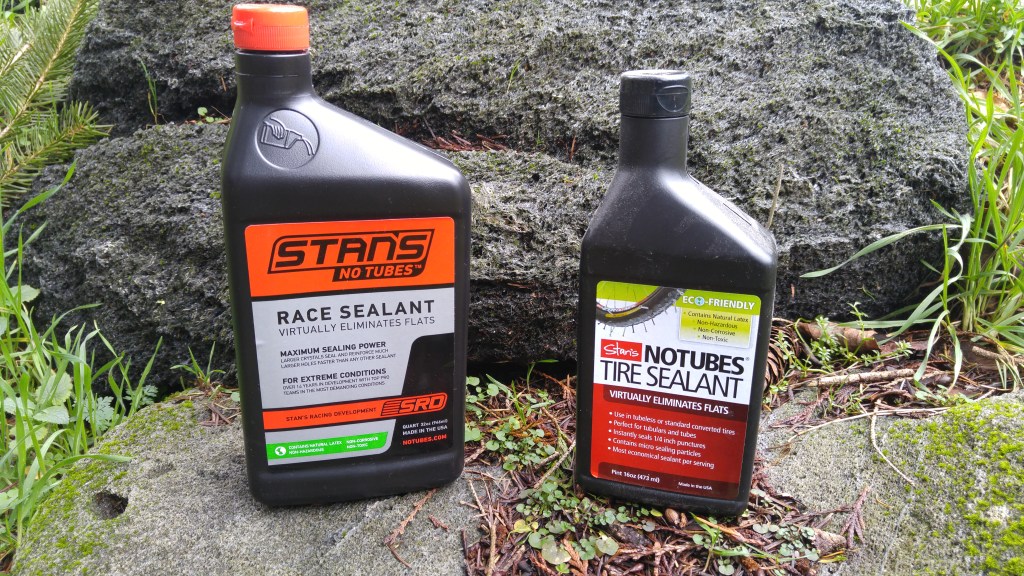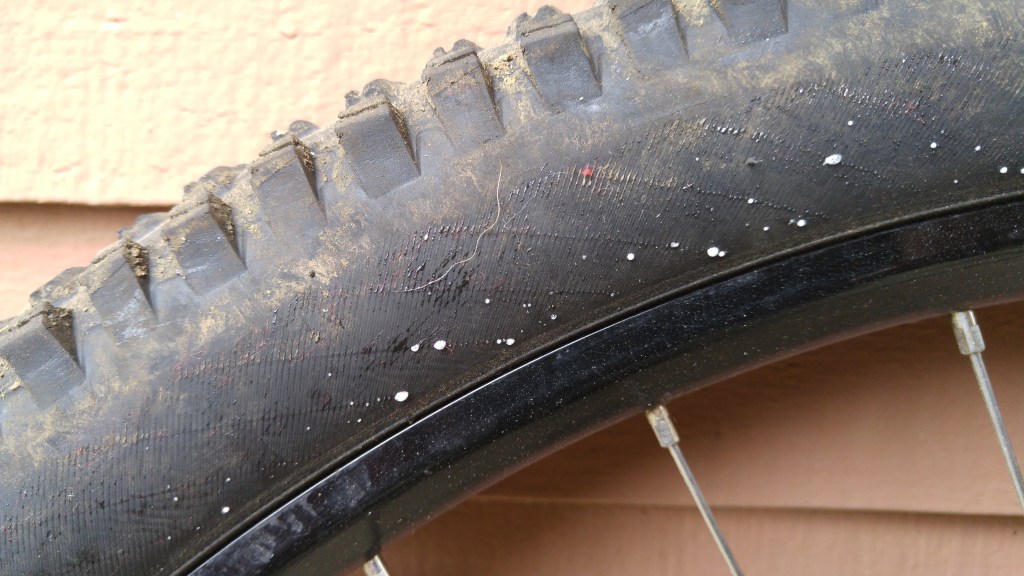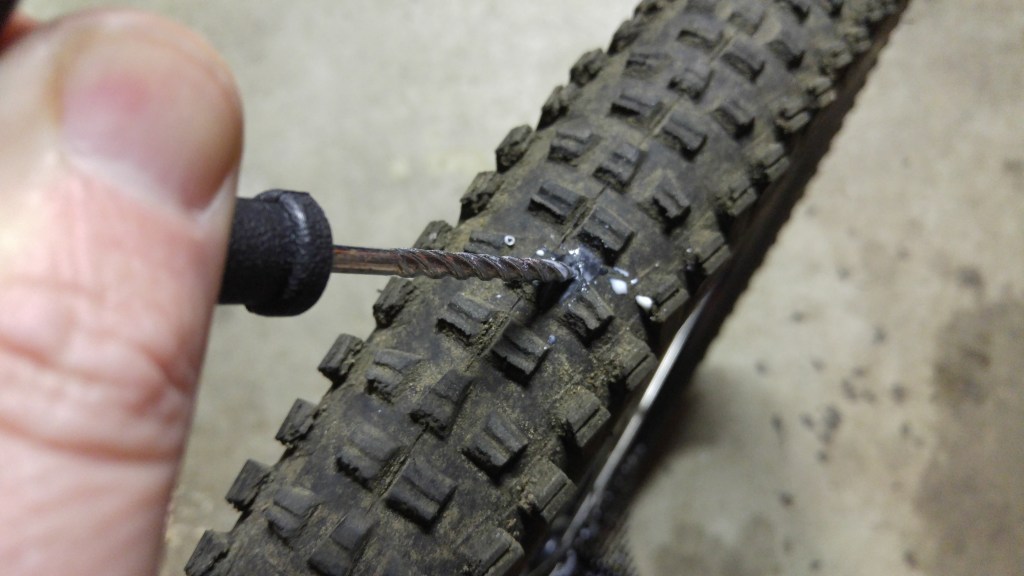
New Goo: Stan’s Race Sealant
Stan’s No Tubes seems to have been around for eons. It turns out it hasn’t, just 15 years actually, but as the evangelists for running your tires without tubes you have to tip your hat to them for sticking with it. For most of us running tires without tubes is pretty commonplace now but step back 5 years and that wasn’t the case.
Stan’s sealant has been my go to pretty much exclusively since I ditched the tubes. I never really notice it doing its job other than the occasional wisp of residue – when it has done its job. There are other brands and blends of sealant out there but with Stan’s seeming to do the job I’ve never risked straying to try anything else. So it seems that for Stan’s 15th birthday they decided to bring a special brew to the public that has been solely for sponsored racer types in the past.
With the 15th birthday comes a fresh logo.
From the horse’s mouth;
“For our 15th Anniversary, Stan’s is introducing Stan’s Racing Development (SRD), a part of the company headed by Stan and focused entirely on racing performance. The first SRD product to be released is our new Race Sealant. New Race Sealant is a high-performance formula we’d been developing with pro racers for the past 14 years. It’s seriously “performance only” and will clog the hell out of any injectors, 2oz bottles, etc; it can only be poured directly into the tire. That means it’s also way too powerful for tubes and tubulars. What it is designed to do is seal just about any puncture.”
The aggressive young buck next to the original. The race sealant is so aggressive at sealing that it can’t be sold in the small two ounce bottles and has to be poured into the tire.
So from that description, it sounds like the semolina pudding of sealants. What they have done is up the number of sealing crystals and added larger crystals to the latex mix. Those larger crystals grab on to each other to seal larger punctures faster and the sheer number of them means that they seal and reinforce faster for less air loss and more ride time. Which for a racer means finishing your run or race. These larger crystals mean that they have had to get artisanal on us and actually add some of the ingredients by hand. Hipsters will love it. Even with all that new crystal tech, the latex sealant is still non-toxic, non-hazardous, and safe for the environment. So that’s all good but what’s the catch? Well, the shelf life’s the same, but this sealant is way more aggressive in the tire. To that end Stan’s recommends taking a peek at the state of the sealant every 2 weeks versus the 3-4 for the standard stuff (but really who does that?). And before you ask… yes, you can mix it with the original fluid and I’ll come back to that.
So now the challenge, how the hell do you really test some tire sealant? Well, my approach was scientific, kind of. I got an old tire with a worn out sidewall that I knew seeped air and mounted it up to a wheel with some of the new sealant and inflated it to 35psi. A few spins to coat the inside and I left it hanging in the garage. Two days later I checked the pressure and it was 32psi and there was evidence of the sealant having plugged the slightly porous sidewall.
You have all probably seen this on older tires after you have brapped the hell out of some berms. The worn sidewall was seeping air and was hard to seal. The new race version of the Stan’s formula dropped only 3psi over the original inflated pressure while sealing up this porous tire. Pretty impressive.
Okay fine, the original sealant did that too, although I’m not sure it would have done that with such a little drop in psi. Before the scientists and engineers flame me in the comments, yes I should have done a control tire. Whatever. You are lucky that I went to this much trouble!
So then my next test was to introduce a puncture. Taking an awl, I put a decent hole into the tire, something the size of what a sharp rock might be able to do. Spinning the wheel I waited to see what the sealant would do. The hiss went away quickly and after about 3 minutes of spinning, I checked the pressure again. 25psi. That is pretty impressive and, more importantly, enough pressure to get to the end of a run. Important for the racers out there.
I stuck a proper hole in the tire to see how well it would seal up and it did the trick, dropping from 32psi to around 25psi according to my digital gauge. That’s good enough to finish a run without catastrophe.
However not all of us are racer types so what does this mean to the normal joe mountain biker? Well my thought is that I’m going to mix this with the original formula 50/50. I think that the more aggressive stuff will help seal up the tire when first mounted up quicker and help seal up those tires that somehow come with a sidewall that just wants to seep air. Having the original formula in there will mean that you can stick with not inspecting the sealant at all until the tire is worn out at the end of summer.
Maybe Stan’s will come out with a 50/50 blend at some point and call it Racer-ish? Or the Stravaturd mix? Maybe I’ll suggest it. Anyway for those that take their racing or Strava ratings seriously it may be worth a look.
Due to the aggressive sealing nature of Stan’s Race Sealant, the small 2 oz. dose bottles won’t work and the sealant has to be poured into the tire, not squirted in through the valve stem. Stan’s is releasing the Race Sealant today and it should be in stores soon.
Huh. At first we thought: “sealant news? pssh.” But now it looks like there will be fights over the new Stan’s and competitions to come up with the new Stan’s Secret Sauce cocktail mix of champions. Or something.











Comments
UnkeeTyTy
8 years, 2 months ago
I've always thought Stan's was a mediocre product. It is a rare day indeed when a tire doesn't take 20 minutes and a hand pump to seal on the trail. This stuff may reduce my swear count to near zero.
Reply
YVR
8 years, 2 months ago
If it has to be added by hand and has larger crystals, it will evaporate/dissipate/clump at much faster rate. Hence, quicker time to 'Stan's balls' in your tire - which will be the tradeoff vs. the standard solution. Good choice for those with a mechanic to manage their wheels. Breaking and resetting the bead on your tires every 2 weeks to check for solids? Yikes.
Reply
MeVP
8 years, 2 months ago
Pretty cool. It raises questions. Why does it need to be checked more often? Does it evaporate more quickly? That's the downside of Stan's compared to the competitors, but I still prefer Stan's. I find I have to add sealant at 6 weeks in summer, a whole lot less when it's cold out. In Arizona, you probably boil off a lot of sealant.
Also, I wonder if it clogs our Presta valves and won't work in real life. If it doesn't clog valves and doesn't evaporate more quickly, then no reason not to use it unless you have a tire/rim combo that hates to come off. Maybe it's more expensive, and the original is pretty good. Would love to see a 6-8 week test of this stuff.
Reply
Deniz Merdano
8 years, 2 months ago
You know what they are going to call the 50/50 mix…. Endur….
Reply
Kos
8 years, 2 months ago
Wrong spelling, Deniz.
It will be "Stan's Endorko Formula".
Blue bottle, of course!
Reply
Please log in to leave a comment.